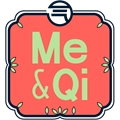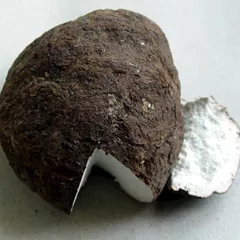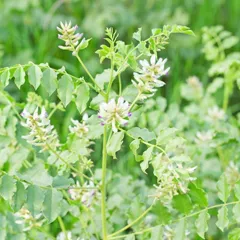Edema according to Chinese Medicine
The information provided here is not a replacement for a doctor. You shouldn't use it for the purpose of self-diagnosing or self-medicating but rather so you can have a more informed discussion with a professional TCM practitioner.
Edema factsheet
Possible causes and remedies:
Symptoms: Lumps Nausea Tumors and ten other symptoms
Recommended formula: Er Chen Tang and six other formulas
Spleen Deficiency with Dampness
Symptoms: Edema Diarrhea Urinary difficulty and one other symptom
Recommended formula: Wu Ling San
In Chinese Medicine, edema can be associated with five so-called "patterns of disharmony". Chinese Medicine sees the body as a system, not a sum of isolated parts. A "pattern" is when the system's harmony is disrupted. It is not equivalent to the Western concept of "disease", as a matter of fact here edema can be caused by five different patterns.
To understand whether someone's edema might be caused by a given pattern, one needs to look for signs and symptoms associated with the pattern beyond what one might typically experience from edema alone. For instance when edema is caused by the pattern Phlegm, patients also experience symptoms such as feeling of oppression of the chest, muzziness of the head, dizziness and nausea. Similarly, patients with Phlegm typically exhibit slippery (Hua) or wiry (Xian) pulses as well as swollen tongue with sticky coating .
We've listed below a description of the five patterns associated with edema so that you can start to get an understanding of the various possibilities according to Chinese Medicine.
Once identified, patterns are often treated using herbal formulas. Drinking herbal infusions is the most common remedy in Chinese Medicine, together with acupuncture. Here we detail below eight formulas that can help treat the various patterns associated with edema, depending on which pattern fits your profile.
The five "patterns of disharmony" associated with edema

Crow-Dipper Rhizomes (Ban Xia) is the key herb for Er Chen Tang, a formula used for Phlegm
Phlegm
Pulse type(s): Slippery (Hua), Wiry (Xian)
Tongue coating: Sticky coating, Thick coating
Tongue shape: Swollen
Recommended herbal formulas: Er Chen Tang, Liu Jun Zi Tang, Ban Xia Bai Zhu Tian Ma Tang, Wen Dan Tang, Hao Qin Qing Dan Tang, Xing Su San, Wu Ling San
Symptoms: Lumps Nausea Tumors Nodules Obesity Delirium Dizziness Overweight Feeling of heaviness Muzziness of the head Numbness in the limbs Thick greasy secretions Feeling of oppression of the chest
Phlegm has a great importance in Chinese Medicine as it is both a condition in and of itself as well as a cause for other diseases.
The main cause for the formation of Phlegm is Spleen Deficiency since the Spleen rules the transformation and transportation of Body Fluids. If this function is impaired, Body Fluids accumulates and change into Phlegm.
The Lungs and Kidneys may also be involved since they each play a role in handling body Fluids: the Lungs disperse and descend Body Fluids while the Kidneys transform and excrete them. Again, if they fail to perform those roles, Body Fluids will accumulate and become Phlegm.
That being said, the Spleen malfunction is the fundamental reason behind the formation of Phlegm and, as such, treatments will focus on it first and foremost.
There are two broad types of Phlegm: so-called "Substantial Phlegm" and "Non-Substantial Phlegm". Simply put, Substantial Phlegm can be seen, such as sputum in the Lungs and throat. Non-Substantial Phlegm is more hidden and will manifest itself into, for instance, kidney stones, gallstones or arthritic bone deformities.
Phlegm can accumulate and settle down in different parts of the body and lead to corresponding symptoms. For example, if it stays in the joints, muscles and Channels, there are muscle numbness, bone deformities and etc. If it mists the Heart, it causes many mental illness. If it settles in the Gall Bladder or Kidney, it leads to stones in these Organs.
Phlegm can further be categorized according to its nature: there is Damp-Phlegm, Phlegm-Heat, Cold-Phlegm, Wind-Phlegm, Qi-Phlegm, Phlegm-Fluids and etc.
"Phlegm-Fluids" is very similar to Dampness and is very watery and thin. It can be heard splashing in the body, found usually in the Stomach and Small Intestines, hypochondrium, limbs or above the diaphragm.

The Spleen is a so-called "Zang" Organ. Learn more about the Spleen in Chinese Medicine
Spleen Deficiency with Dampness
Recommended herbal formula: Wu Ling San
Symptoms: Edema Diarrhea Urinary difficulty General sensation of heaviness
Edema might be due to Spleen Deficiency with Dampness if the condition is paired with typical pattern symptoms such as edema, general sensation of heaviness, diarrhea and urinary difficulty.

The Triple Burner is a so-called "Fu" Organ. Learn more about the Triple Burner in Chinese Medicine
Phlegm in the Lower Burner
Recommended herbal formula: Wu Ling San
Symptoms: Vertigo Coughing Shortness of breath Vomiting frothy saliva Throbbing pulsations just below the umbilicus
Edema might be due to Phlegm in the Lower Burner if the condition is paired with typical pattern symptoms such as throbbing pulsations just below the umbilicus, vomiting frothy saliva, vertigo and shortness of breath.

Stephania Roots (Fang Ji) is the key herb for Fang Ji Huang Qi Tang, a formula used for Wind-Damp
Wind-Damp
Pulse type(s): Floating (Fu)
Tongue coating: Thick white coating
Tongue color: Pale
Recommended herbal formula: Fang Ji Huang Qi Tang
Symptoms: Edema Sweating Urinary difficulty General sensation of heaviness
Edema might be due to Wind-Damp if the condition is paired with typical pattern symptoms such as sweating, general sensation of heaviness, edema and urinary difficulty. Similarly, patients with Wind-Damp typically exhibit floating (Fu) pulses as well as a pale tongue with thick white coating.

The Kidneys is a so-called "Zang" Organ. Learn more about the Kidneys in Chinese Medicine
Kidney Yang Deficiency
Recommended herbal formula: Ba Wei Di Huang Wan
Symptoms: Asthma Dysuria Coughing Impotence Spermatorrhea Frequent urination Persistent diarrhea Prostatic hypertrophy Spasms of the lower abdomen Cold in the lower extremities Soreness and weakness in the lower back
Edema might be due to Kidney Yang Deficiency if the condition is paired with typical pattern symptoms such as soreness and weakness in the lower back, cold in the lower extremities, impotence and spermatorrhea.
The eight herbal formulas that might help with edema



The top herbs in Wu Ling San are Water Plantain (Ze Xie), Poria-Cocos Mushrooms (Fu Ling) and Polyporus (Zhu Ling)
Wu Ling San
Source date: 220 AD
Number of ingredients: 5 herbs
Key actions: Promotes urination,. Warms the Yang. Strengthens the Spleen. Promotes Qi transformation function. Drains Dampness. Clears edema.
Why might Wu Ling San help with edema?
Because it is a formula often recommended to help with the patterns Phlegm, Spleen Deficiency with Dampness and Phlegm in the Lower Burner which are sometimes associated with edema. If any of these patterns look like something you might suffer from, this formula might help (although please seek confirmation with a professional practitioner beforehand).



The top herbs in Fang Ji Huang Qi Tang are Stephania Roots (Fang Ji), Milkvetch Roots (Huang Qi) and Atractylodes Rhizomes (Bai Zhu)
Fang Ji Huang Qi Tang
Source date: 220 AD
Number of ingredients: 6 herbs
Key actions: Diuretic, clears Excess fluid and removes edema. Tonifies the Spleen Qi. Calms External Wind.
Why might Fang Ji Huang Qi Tang help with edema?
Because it is a formula often recommended to help treat Wind-Damp, a pattern sometimes associated with edema. If it looks like you might suffer from Wind-Damp, this formula might help (although please seek confirmation with a professional practitioner beforehand).



The top herbs in Ba Wei Di Huang Wan are Prepared Rehmannia (Shu Di huang), Cornelian Cherries (Shan Zhu Yu) and Yam (Shan Yao)
Ba Wei Di Huang Wan
Source date: 220 AD
Number of ingredients: 8 herbs
Key actions: Tonifies Yang. Warms the Kidneys and lower extremities.
Why might Ba Wei Di Huang Wan help with edema?
Because it is a formula often recommended to help treat Kidney Yang Deficiency, a pattern sometimes associated with edema. If it looks like you might suffer from Kidney Yang Deficiency, this formula might help (although please seek confirmation with a professional practitioner beforehand).



The top herbs in Ji Sheng Shen Qi Wan are Prepared Aconite (Zhi Fu Zi), Cinnamon Bark (Rou Gui) and Cyathula Roots (Chuan Niu Xi)
Ji Sheng Shen Qi Wan
Source date: 1695 AD
Number of ingredients: 10 herbs
Key actions: Tonifies the Kidneys. Warms Yang. Promotes water transformation. Reduces water retention.
Why might Ji Sheng Shen Qi Wan help with edema?
Because it is a formula often recommended to help treat Kidney Yang Deficiency, a pattern sometimes associated with edema. If it looks like you might suffer from Kidney Yang Deficiency, this formula might help (although please seek confirmation with a professional practitioner beforehand).



The top herbs in Shu Jing Huo Xue Tang are Dong Quai (Dang Gui), White Peony Roots (Bai Shao) and Szechuan Lovage Roots (Chuan Xiong)
Shu Jing Huo Xue Tang
Source date: 1587 AD
Number of ingredients: 16 herbs
Key actions: Expels Wind Damp from the Channels. Invigorates Blood. Unblocks the channels.
Why might Shu Jing Huo Xue Tang help with edema?
Because it is a formula often recommended to help treat , a pattern sometimes associated with edema. If it looks like you might suffer from , this formula might help (although please seek confirmation with a professional practitioner beforehand).



The top herbs in Wei Ling Tang are Water Plantain (Ze Xie), Black Atractylodes Rhizomes (Cang Zhu) and Poria-Cocos Mushrooms (Fu Ling)
Wei Ling Tang
Source date: 1481 AD
Number of ingredients: 9 herbs
Key actions: Promotes urination. Warms the Yang. Strengthens the Spleen. Drains Dampness. Promotes the movement of Qi. Harmonizes the Stomach.
Why might Wei Ling Tang help with edema?
Because it is a formula often recommended to help treat , a pattern sometimes associated with edema. If it looks like you might suffer from , this formula might help (although please seek confirmation with a professional practitioner beforehand).



The top herbs in Chai Hu Gui Zhi Tang are Bupleurum Roots (Chai Hu), Cinnamon Twigs (Gui Zhi) and White Peony Roots (Bai Shao)
Chai Hu Gui Zhi Tang
Source date: 220 AD
Number of ingredients: 9 herbs
Key actions: Harmonizes the Lessor Yang and Greater Yang Stage. Releases the Exterior and muscle layer. Harmonizes the Liver, Spleen and Intestines. Dispels Water Accumulation.
Why might Chai Hu Gui Zhi Tang help with edema?
Because it is a formula often recommended to help treat , a pattern sometimes associated with edema. If it looks like you might suffer from , this formula might help (although please seek confirmation with a professional practitioner beforehand).



The top herbs in Huan Shao Dan are Prepared Rehmannia (Shu Di huang), Goji Berries (Gou Qi Zi) and Morinda Roots (Ba Ji Tian)
Huan Shao Dan
Source date: 1170 AD
Number of ingredients: 15 herbs
Key actions: Tonifies the Spleen, Heart and Kidneys. Nourishes Yin and Blood. Augments Qi . Tonifies Yang. Promotes Longevity.
Why might Huan Shao Dan help with edema?
Because it is a formula often recommended to help treat , a pattern sometimes associated with edema. If it looks like you might suffer from , this formula might help (although please seek confirmation with a professional practitioner beforehand).






